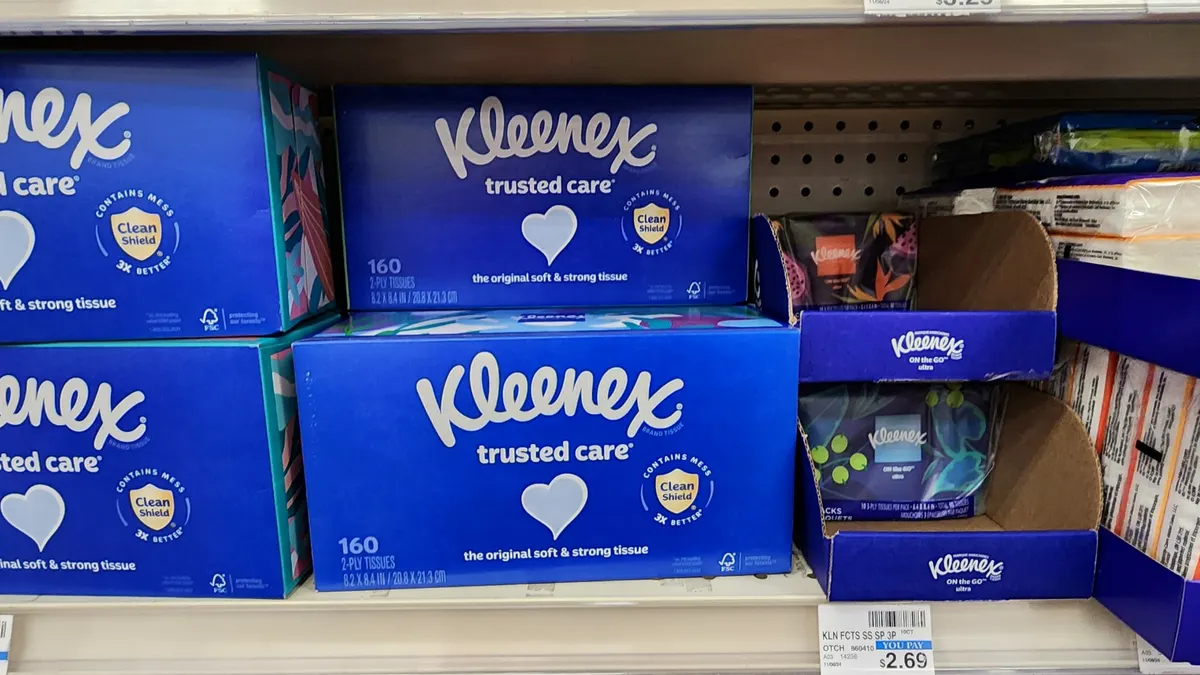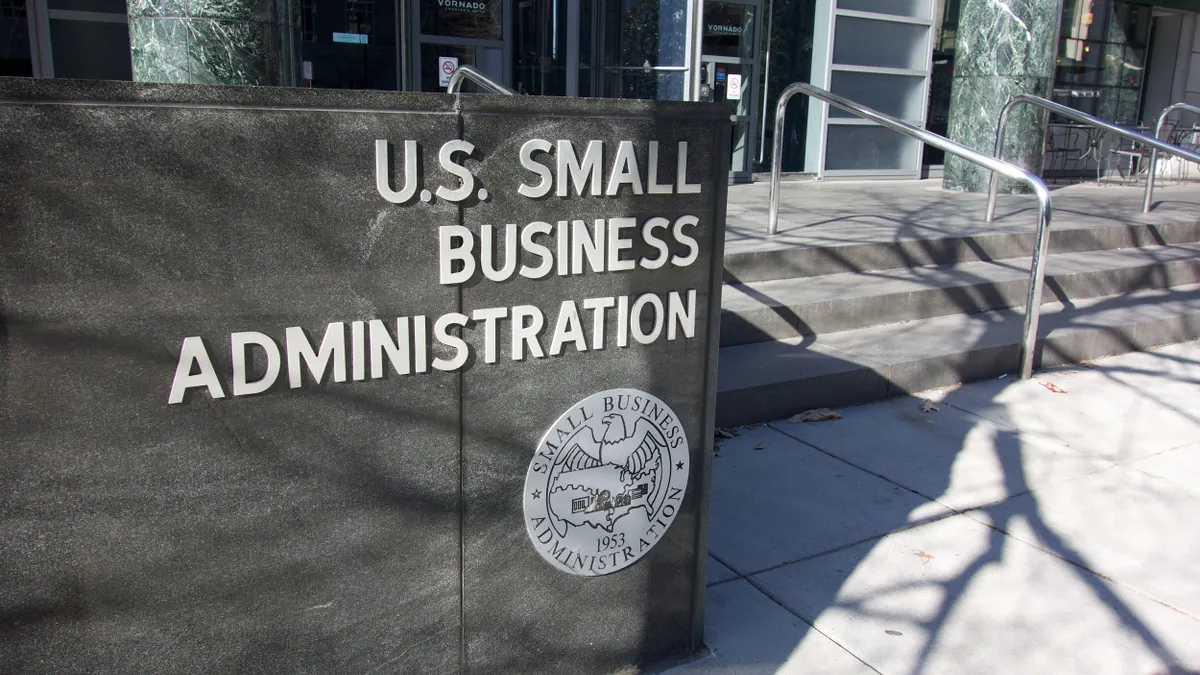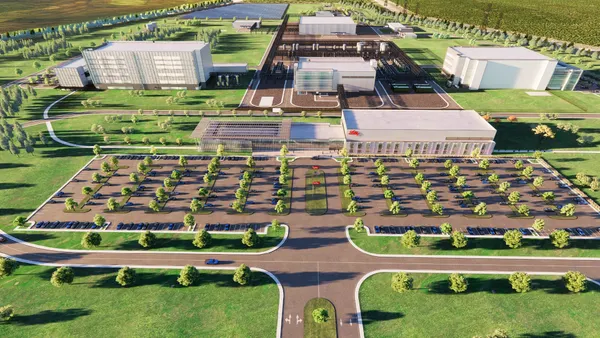Dive Brief:
- Kleenex tissue maker Kimberly-Clark and pulp producer Suzano are forming a $3.4 billion global consumer and professional tissue joint venture in an effort to bolster their long-term growth strategies, the companies announced Thursday.
- Suzano has agreed to pay the tissue manufacturer $1.7 billion to acquire 51% of the new entity, which will be based in the Netherlands. The deal includes 9,000 employees and 22 manufacturing facilities across Europe, Asia, the Middle East, South and Central America, Africa and Oceania.
- Kimberly-Clark will own the remaining 49% and retain its consumer and professional entities in the United States, as well as existing joint ventures in Mexico, South Korea and Bahrain, among other countries. The transaction is expected to close in mid-2026.
Dive Insight:
The joint venture is part of Kimberly-Clark’s long-term growth strategy introduced last year, Chairman and CEO Mike Hsu said in a statement. The plan aims to save the company more than $3 billion through improved productivity and accelerate the growth of its brands and businesses, particularly its North America and international personal care segments.
More than 40 of Kimberly-Clark’s regional brands under its international family care and professional portfolio will be transferred into the joint venture. Additionally, Suzano plans to enter a long-term license with the new company for the use of global brands, including Kleenex, Scott, Cottonelle, WypAll, Viva and Kimberly-Clark Professional, the Brazil-based pulp producer said in its press release.
The deal follows Suzano’s acquisition of Kimberly-Clark’s Brazilian tissue assets and brands in 2023, the paper maker said in its release.
The pending transaction aligns with Suzano’s long-term cost-effective and growth strategy that’s focused on scalable businesses where it can strengthen its operational efficiency.
Once the deal closes, approximately two-thirds of Kimberly-Clark’s net revenues will come from its personal care categories, progressing its long-term growth, profitability and returns on investment, according to the tissue maker’s press release.
The joint venture is expected to reduce Kimberly-Clark’s exposure to volatile input costs, improving the company’s ability to deliver expected and deliverable margins and profitability over time. Kimberly-Clark anticipates $300 million in additional costs from tariffs this year, Hsu said in his remarks during an April earnings call.
The majority of products sold in the U.S. are sourced and domestically produced, Kimberly-Clark CFO Nelson Urdaneta said in the earnings call. In terms of raw materials and finished goods, the company's exposure to China, Mexico and Canada was around or less than 10% of its total cost of goods.
“If we factor in all of our raw materials and finished goods imports for our US business, 80% of our total costs in the U.S. are U.S.-based, so only 20% of our U.S. costs are exposed to tariffs,” Urdaneta said.
The volatile tariff backdrop is affecting Kimberly-Clark on three fronts. The 145% duty on China drives about two-thirds of the $300 million, Urdaneta said. The U.S.'s reciprocal tariffs account for 10% and retaliatory tariffs from other countries represent 25% of the impact costs, he added.
The company is working fast to mitigate the costs, Urdaneta said. Still, he added that Kimberly-Clark is in a much better position to handle many of these headwinds.
“You can't solve that overnight because we're having to reaccommodate some of the elements of our supply chain, and we intend to already be able to address about a third of the impact this year,” Urdaneta said. “Now it'll take us through 2026 to pretty much be able to address the whole element in a consistent manner based on what's been enacted today.”
The joint venture is one of many actions Kimberly-Clark has taken to make progress on its strategy and alleviate tariff costs. Last month, the Scott paper towel maker announced plans to invest more than $2 billion over the next five years in its North America segment, expanding its U.S. manufacturing capacity and modernizing its supply chain.















